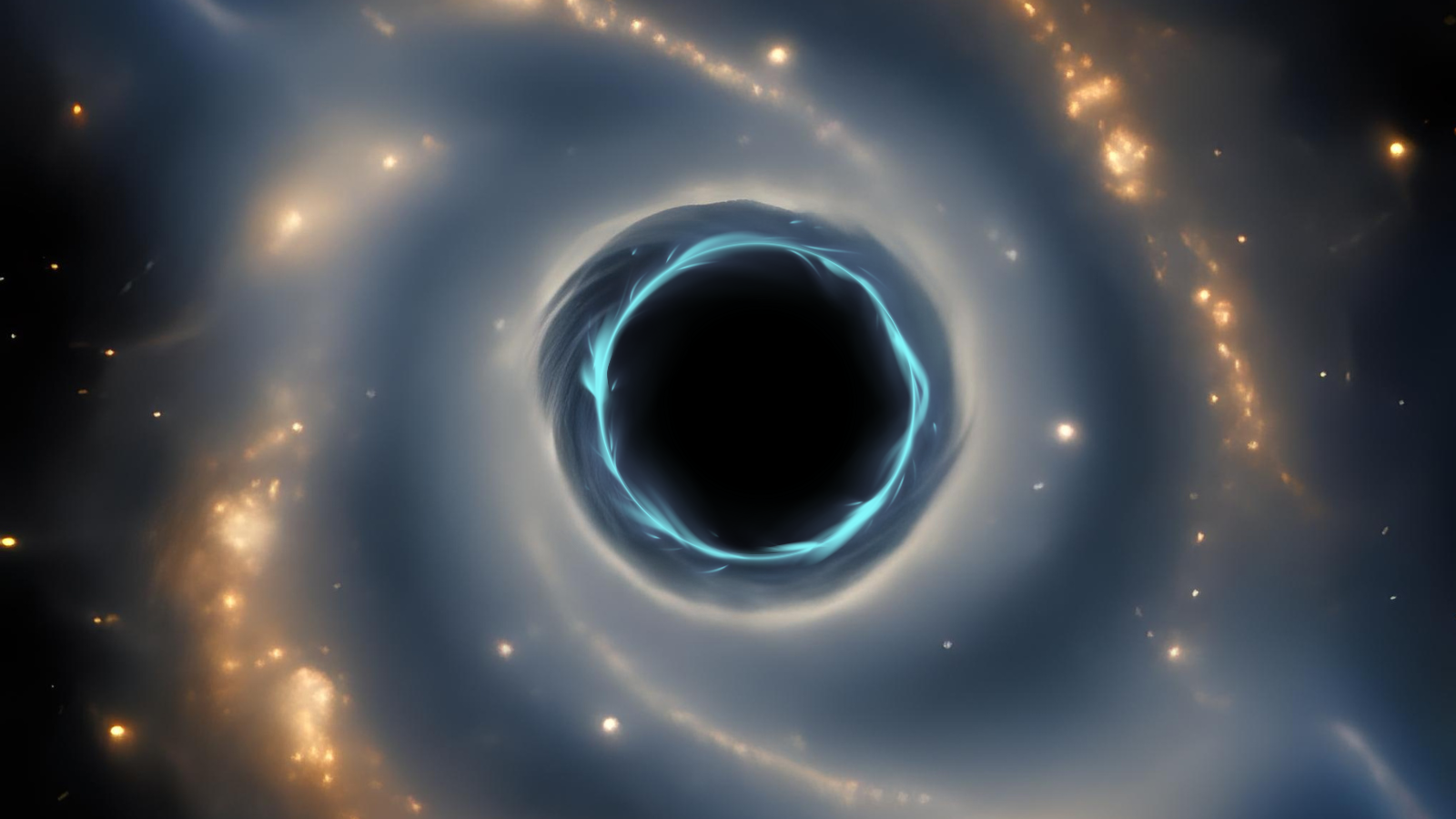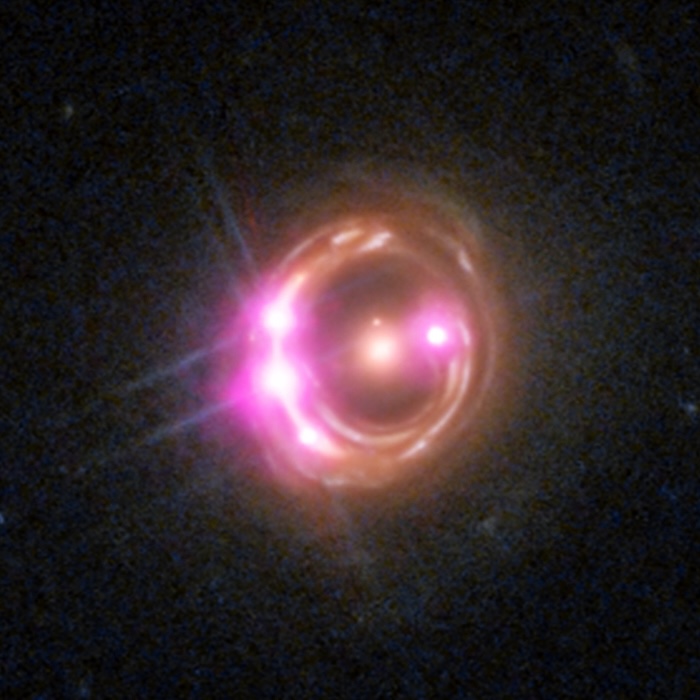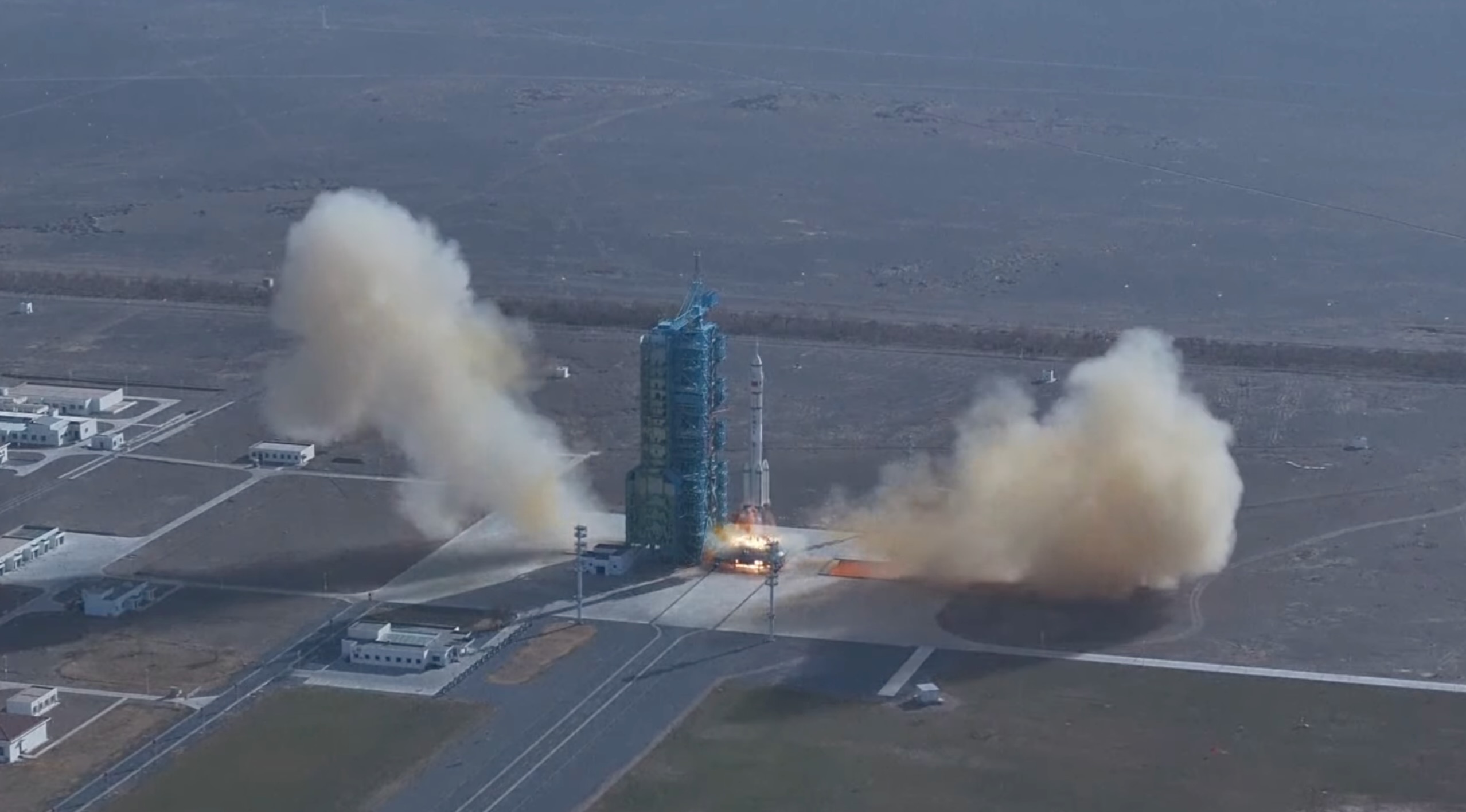Warped spacetime with surprise 'double-zoom' reveals radiation around distant supermassive black hole

Thanks to a theory put forward by Albert Einstein over 100 years ago and a happy coincidence, astronomers have discovered radiation being pumped out from the core of a quasar — within which a supermassive black hole lurks.
The team, led by Matus Rybak of Leiden University, made the discovery while hunting for cold gas in the galaxy RXJ1131-1231, an active galaxy with a quasar at its core located around 6 billion light-years from Earth. Despite its immense distance from our planet, RXJ1131-1231 is a popular target for astronomers because of an effect predicted in Einstein's 1915 theory of general relativity called gravitational lensing.
Gravitational lensing occurs when a massive object sits between Earth and a background source — in this case, RXJ1131-1231 and its quasar. The massive object warps spacetime and thus the path of light from that background source. This "macrolensing" (gravitational lensing involving a really huge lens like another galaxy) has the effect of magnifying that background source. As a result, RXJ1131-1231 appears three times larger than it would normally. However, gravitational lensing occurs in a less extreme form called "microlensing" as well, meaning lensing by an intermediate object that's considerably less massive than a galaxy. And that is something integral to this story.
While studying RXJ1131-1231 with the Atacama Large Millimeter/submillimeter Array (ALMA), a radio telescope comprising 66 antennas across the Atacama Desert region of northern Chile, the team saw three images of this galaxy that changed in brightness independently of one another.
"That's a smoking gun for microlensing, a phenomenon that occurs when a star is located between the foreground galaxy and the observer," Rybak explained. "We immediately knew we had to pursue this further."
That powerful tag-team punch of macrolensing and microlensing provided the team with a "double zoom" effect that revealed things about RXJ1131-1231 otherwise hidden.
"With this 'double zoom,' the magnification by the galaxy and that by the star, it's as if you're placing two magnifying glasses on top of each other," Rybak said.
Breaking space news, the latest updates on rocket launches, skywatching events and more!
After initially studying RXJ1131-1231 in 2015, Rybak and colleagues returned for another look five years later, in 2020. This allowed them to track the brightness differences of the quasar.
They noticed the quasar flickering on a timescale of years — but even more interesting was that it flickered in millimeter wavelength radiation. This kind of radiation is usually emitted by calm and quiet gas and dust, so that was extraordinary.
In this case, the team thinks this millimeter radiation indicates the quasar in RXJ1131-1231 is surrounded by a hot and highly magnetic doughnut-shape band of material called a "corona" around the supermassive black hole.
The team behind this research was already considered pioneering in the field for their 2008 breakthroughs in the microlensing of optical light, but now they find themselves raising the bar again by studying the microlensing of millimeter radiation for the first time.
The team isn't done with RXJ1131-1231 and its quasar either. They intend to study it further with the Chandra X-ray telescope, using microlensing to determine the temperature and the strength of magnetic fields close to supermassive black holes.
This could help build a better model of how supermassive black holes influence their surrounding galaxies.
The team's research was published on Thursday (Aug. 21) in the journal Physical Review Letters.

Robert Lea is a science journalist in the U.K. whose articles have been published in Physics World, New Scientist, Astronomy Magazine, All About Space, Newsweek and ZME Science. He also writes about science communication for Elsevier and the European Journal of Physics. Rob holds a bachelor of science degree in physics and astronomy from the U.K.’s Open University. Follow him on Twitter @sciencef1rst.
You must confirm your public display name before commenting
Please logout and then login again, you will then be prompted to enter your display name.

